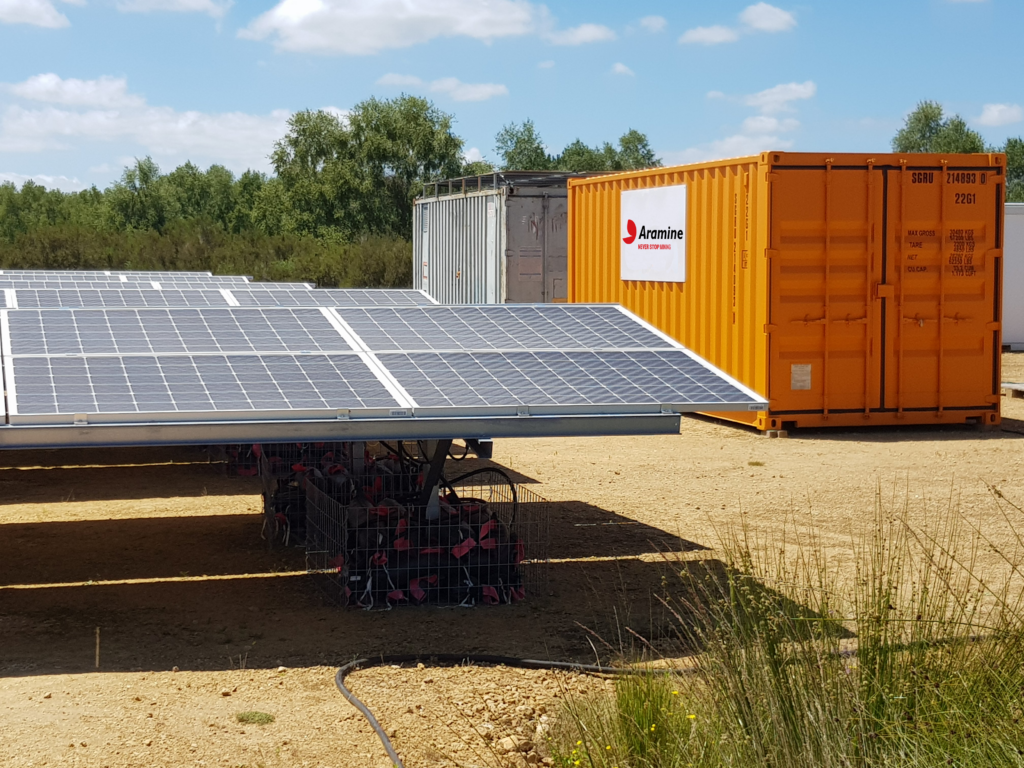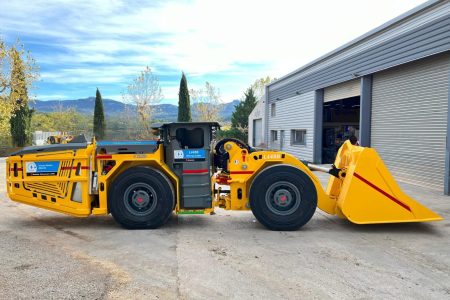
Transforming Energy Efficiency: Aramine Revolutionizes Mines Performance
The challenges of supplying electricity to isolated sites
Mining operations are often situated in remote and isolated areas, posing significant challenges in maintaining a stable and reliable electricity supply. Traditionally, these sites have relied heavily on fossil fuels, primarily through the use of above-ground electrical generators. However, this dependency comes with several critical drawbacks:
- High CO2 Emissions: The extensive use of diesel generators significantly contributes to greenhouse gas emissions, impacting the environment adversely.
- Risk of Power Cuts: Remote locations are prone to power outages, which can disrupt operations and cause substantial financial losses.
- Supply Chain Difficulties: Transporting diesel to isolated sites is logistically challenging and expensive, leading to operational inefficiencies.
Discover Aramine Solar stations
In alignment with its Corporate Social Responsibility (CSR) commitments, Aramine has partnered with Tysilio, the inventor of the Tysilio Solar Station to offer a cutting-edge solution for these challenges.
The Aramine Solar stations powered by Tysilio represent a revolutionary advancement in energy solutions, providing a reliable, 100% renewable energy and independent electricity supply. Labeled by the Solar Impulse Foundation, this innovative approach is ideal for recharging Aramine’s battery-powered machines and ensures continuous mining operations without any reliance on fossil energies.
Numerous advantages are provided by Aramine Solar station:
- Easy to Install: The solar stations are delivered as kits in containers, ready for self-assembly anywhere in the world. No soil investigation or earthworks are required, making the setup process straightforward and efficient.
- Quickly Profitable: The solar stations significantly reduce operational costs. It’s estimated that a solar station can save up to €50,000* per year in operating costs for the L140B machines, equating to €1.5 million over 30 years.
* : Approximately €53,665 worth of diesel can be saved annually per solar station, with 3 kWh of solar energy replacing 1 liter of diesel.
- Self-Sufficient: Being independent from the electricity grid, these solar stations enable the operation of mines in extremely isolated areas without the risk of power cuts.
- Reliable: Tysilio’s photovoltaic systems are renowned for their quality and reliability, backed by a 10-year warranty. This warranty covers all parts of the installation, contingent on biennial or annual technical and regulatory inspections by Tysilio.
- Low carbon footprint: Each solar station can reduce CO2 emissions by 100 tons annually compared to a diesel generator, contributing significantly to environmental sustainability and enabling companies to report their decarbonization efforts in CSR reports.
A complete battery powered loader range
Aramine continues to lead the way in mining innovation with its revolutionary electric vehicles, the L140B and L440B.
L140B: As the world’s first battery-powered machine designed specifically for narrow vein mining, the L140B represents a significant leap forward in sustainability and efficiency. By replacing the manual labor equivalent of three miners, it not only enhances productivity but also improves safety and reduces operational costs. Its compact design allows it to maneuver effectively in tight underground spaces, making it ideal for narrow vein operations.
L440B: Catering to medium-sized mining operations, the L440B combines robust performance with environmentally friendly technology. It is engineered to handle demanding tasks with efficiency, minimizing downtime and maintenance costs. This makes it a versatile and cost-effective solution for various mining applications.
Both the L140B and L440B can be equipped with a second energy module, allowing them to operate continuously without interruption. This feature ensures maximum productivity and efficiency, reducing downtime and enhancing overall mining operations.
When paired with Aramine Solar, these battery vehicles offer the perfect synergy of sustainability and performance. The integration of solar energy enhances their operational efficiency while significantly reducing their carbon footprint, aligning with Aramine’s commitment to sustainable mining practices.
Conclusion
Aramine’s electric vehicle lineup, complemented by solar power integration and continuous operation capability, sets a new standard in the mining industry by promoting environmental responsibility without compromising operational effectiveness.
By transitioning to these sustainable and efficient power sources, mining operations can significantly reduce their carbon footprint, lower operating costs, and ensure a reliable power supply. This innovative step not only demonstrates Aramine’s commitment to sustainability but also sets a new standard for energy use in remote mining operations.





